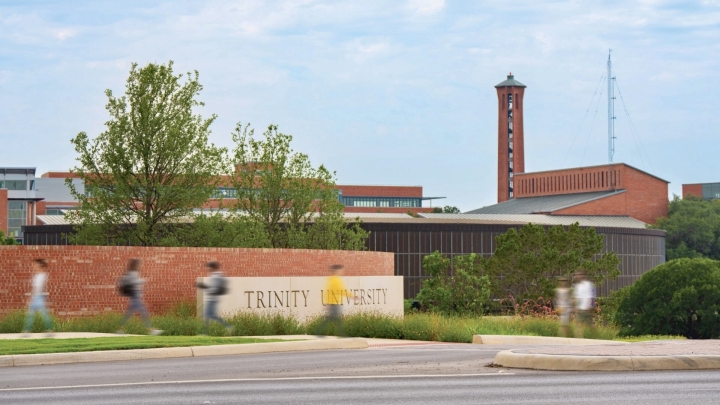
For 150 years, Trinity University has committed to attracting and enrolling the nation’s best and brightest students. But the past five years have seen the University establish unprecedented momentum in elevating the academic profile and increasing the diversity of its incoming classes.
Since the 2013 launch of the Trinity Tomorrow strategic plan, applications to Trinity have almost doubled: In the 2013-14 application cycle, the University received 5,502 applications for first-year admission, and in 2018-19 it received 9,850. Because Trinity aims to enroll around 640 first-year students each year, the University’s acceptance rate has dropped to a record-low 29 percent. (By comparison, Trinity’s acceptance rate prior to Trinity Tomorrow was 64 percent.)
This momentum has also accelerated the University’s goals for a more inclusive campus. This year, the University has continued to ramp up its efforts to minimize potential barriers to enrollment, ensuring that Trinity’s nationally ranked liberal arts education is accessible to students from any background or socioeconomic status.
The Class of 2023—661 first-year students—will call Trinity home come August. Of this incoming class, 42 percent are from underrepresented backgrounds, including 22 percent who identify as Hispanic or Latino/a. At the same time, average SAT and ACT scores and high school GPAs have all increased, showcasing the University’s dedication to quality applicants.
So what does it take to “make the class”? We chatted with Justin Doty, dean of Admissions, to get a 360-degree perspective on Trinity’s historic enrollment.
TU: What makes an application to Trinity successful?
JD: An increased interest in Trinity demands a shift in the way we think about the admissions process. Trinity strives to personalize the admissions process as much as possible: Because each student’s application is unique, each application review is unique as well, as admissions staff make decisions holistically while carefully considering the distinctive backgrounds and talents each applicant represents. The University aims to enroll a first-year class full of students who are intellectually curious, actively engaged both in and out of the classroom, passionate, talented, and diverse in a myriad of ways.
TU: How does Trinity attract and enroll students who will thrive academically and socially in this environment?
JD: In Texas and across the nation, the landscape of higher education is changing. As demographics shift, we are seeing universities “competing” for top students. This is where that personalized admissions process shines, and we can ask ourselves, “Are these the top students for Trinity?” This helps us identify highly engaged students outside of standard application metrics and determine which students will make an impact in our community and benefit from the Trinity experience. Customized student visit programs, personalized recruitment, and competitive financial aid packages help ensure that our top candidates make Trinity their top choice, regardless of background, income, or socioeconomic status.
TU: What do these personalized approaches mean for the Class of 2023?
JD: To sum it up, the Class of 2023 is “truly Trinity”: more than 660 students selected from almost 10,000, all eager to nurture their curiosities and learn from each other’s diverse perspectives. We are excited to see our Student Success Center and other on-campus resources ready to help students from all backgrounds succeed.


